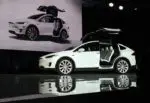
For over a decade now, Tesla Motors and its CEO Elon Musk have captivated both the tech and auto industry with a potent combination of innovation and style. Not only were they responsible for bringing the “electric car” back into the spotlight, but they did so in a way that made it seem luxurious and “cool”… even powerful. In addition, the company has been at the forefront of clean tech, energy storage, and most recently, autonomous driving technology.
It all started with the Tesla Roadster… the first fully electric sports car. Gone were the days when “electric automobile” meant you were talking about a Nissan Leaf, or the other competing models put out by the big auto manufacturers. The Tesla Roadster had all the perks of a real sports car, just without the carbon footprint.
Tesla’s next addition was its first attempt at breaking into the mainstream consumer market. The Model S entered the market in 2012, and had been the company’s main focus until 2015 when the Model X was released.
Take a look at these GIFs comparing the side and front views of the Roadster, S, and X models, as well a comparison of the concept Model S, versus the initial production version, and finally the revised version.
Tesla will soon add to their line-up with the Model 3 (which has yet to unveiled). Sources indicate this will be yet another mid-sized sedan, but will have a much more palatable price of around $35,000.
If this price point sticks, it could be a game changer. Consumers would finally have the option of a reasonably priced (and stylish) electric model that sacrifices very little in regards to what a normal, gasoline powered sedan offers. Not to mention the tax incentives that are offered when purchasing a car like this. It seems the infrastructure needed for a transition to electric is also slowly taking shape as Tesla has set up an ever expanding “supercharger” network across North America, Europe, and Asia.
What many don’t realize, is that Tesla has also entered the energy storage market, and now produces a large, rechargeable lithium-ion battery called the Tesla Powerwall. This battery is designed for home use and stores electricity for normal domestic purposes and backup power. An even larger version called the “Powerpack” is available for industrial use.
Looking at Tesla Motors overall, it’s clear Elon Musk and his company are out to change the game in regards to energy solutions… and change it incredibly fast. What will the next 10 years bring for Tesla? Nobody can be sure, but it’s safe to assume it will be revolutionary.














